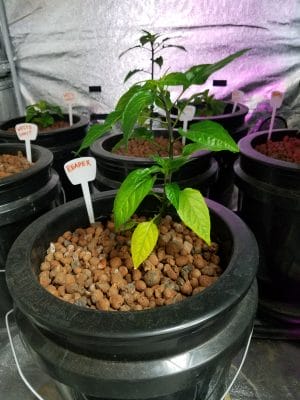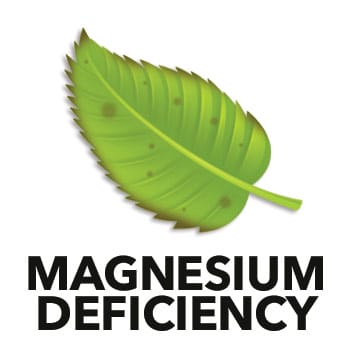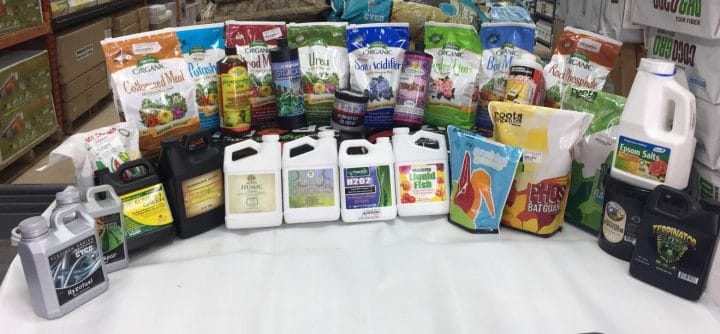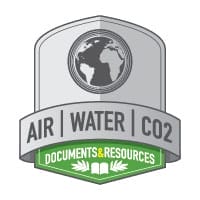Nutrient deficiencies in the indoor garden can be as complicated to discuss as they are to diagnose. If we look at deficiencies from a scientific perspective, it’s all about the atomic state of molecules in your medium – atoms, compounds, ions (both positive and negative), interacting with one another and with your plants’ secretions, not to mention the water you use. Breaking it down to this degree essentially deserves an entire college course though, so we’re going to cut past some of the real heavy stuff and focus on the most common deficiencies in the indoor garden and a few of the processes behind them. We’ll show you how to spot them, how to treat them, and how to best avoid them in the first place!
What is a Nutrient Deficiency in Plants?

In the same way you need calcium, iron, proteins and lots of vitamins to grow and be healthy, your plants also need nutrients. Because all living things are related, plants need many of the same nutrients you do. Plants get their oxygen, carbon, and hydrogen from air and water. Other nutrients enter the plants through roots or foliar applications. When you buy a bottle of fertilizer or plant nutrients, it contains a wide variety of individual minerals/elements. When a plant is experiencing a nutrient deficiency, it means that it is lacking one or more of these essential elements.
Macronutrient vs Micronutrient vs Secondary Nutrient Deficiencies

Minerals or elements that contribute to plant growth are grouped into 3 basic categories by the amounts in which they are used by plants: macronutrients, secondary nutrients, and micronutrients. Macronutrients, are used in large quantities by plants, and include two groups, macronutrients plants get from the atmosphere, (O) oxygen (H) hydrogen and (C) and the macronutrients they get through the grow medium; nitrogen (N), phosphorus (P), potassium (K), also known as N-P-K. The soil macronutrients are needed in such large quantities by all plants they are always listed on every fertilizer you buy. They are listed as a percentage with the first number, nitrogen, then phosphorus and last potassium. For example, a fertilizer listed as 5-1-2 would contain 5% nitrogen 1% phosphorus and 2% potassium.
The secondary nutrients include calcium, magnesium, and sulfur and are sometimes listed as percentages but not all fertilizers will contain these nutrients. Secondary nutrients are also used in large amounts, but significantly less than macronutrients. Micronutrients or trace minerals including iron, boron, sulfur, manganese, zinc, molybdenum, and copper among others and are used in much smaller amounts but still required for growth. Some soil or hydroponic fertilizers may be lacking in micronutrients
Plants can be deficient in any nutrient, but macronutrient deficiencies tend to be more common because plants use larger amounts of them. Afterwards, the most common deficiencies are calcium/magnesium (secondary nutrients) and while less common, deficiencies in micronutrients can happen in any garden.
Nutrient Lockout & Cultural Factors
Knowing the percentage of each nutrient you supply your plants is important when you suspect a nutrient deficiency. Although you’re adding nutrients to your potting soil or hydroponic system, it is possible for plants to be unable to absorb them. This is termed nutrient lockout. If you have nutrient lockout, adding more nutrients will not solve the issue and may even end up creating new problems. If you are dealing with a deficiency it is important to understand environmental conditions can also contribute to nutrient deficiencies which are referred to as ‘cultural factors/problems’. The first step when you see a problem is to know if the environment itself is affecting the plants’ ability to take in and process nutrients. One of the biggest culprits in nutrient lockout happens to be water. Indoor garden water quality will vary among municipalities, high mineral content, as well as unbalanced pH, can cause nutrient lockout. The optimal pH will vary from nutrient to nutrient, and even from plant to plant, but if you are just starting out or don’t know the specifics you should know most plants will be able to get the nutrients they need if you keep the pH between 5.5 and 6.5. Make sure your pH is in this range for soil as well as hydroponics systems if you have deficiencies.
Moreover, many nutrients carry a positive or negative charge. Since opposites attract one nutrient in your solution can stick to another like magnets or Velcro. When that happens, your plants can’t absorb them because they’re too heavy (kind of like trying to suck up pudding through a straw). Other environmental conditions you should check for are: overwatering/under watering, heat stress from lights, soil temperature, low light levels, and the worst is pests. Yes, pests can also simulate deficiency symptoms. Always look for environmental factors as possible causes if signs are present.
Diagnosing Nutrient Deficiencies
How do you tell when plants have a nutrient deficiency, and if so, which one they have? Plant leaves should be a uniform dark green and have a specific shape. If there are discolorations or leaf deformities you need to do something, but there is no one answer because the symptoms for each nutrient are different. Once we’ve ensured all environmental factors are in check including grow lights, grow room ventilation, and indoor garden water quality, we can use the appearance and location of symptoms to help us pinpoint the deficiency. We’re not going to cover every possible nutrient deficiency, but we will go over the usual suspects, starting at the top – pun intended. Before we get started, let’s check in with Dr. Myers for an overview of what we need to do:
Mobile vs Immobile Nutrients

As Doc discussed in the video, the first step to diagnosing a deficiency is noticing where on the plant it occurs, at the top or bottom. Some nutrients can move and are referred to as ‘mobile nutrients’, while some are ‘immobile nutrients’ as illustrated below. Mobile elements are more likely to exhibit visual deficiencies in the older leaves. These nutrients will be translocated from the older leaves to the new growth as the plant runs out of them so you will see the problems first on the lower leaves. Conversely, immobile nutrients stay in the older growth areas, meaning that symptoms of a deficiency will be seen in the new growth at the top of the plant.
Macronutrient Deficiencies
Nitrogen (N) – Mobile

Nitrogen is needed by all life to build DNA and enzymes and is needed in plants for stem and leaf growth. You should always have a percentage of nitrogen in your fertilizer but it must be applied at lower percentage during flowering – read more about nitrogen and growth
Signs – leaves yellow (or start to turn a lighter shade of green) starting at the tips of the bottom leaves and working up towards the top
Causes – Nitrogen deficiencies are common and are usually caused by a shortage of nitrogen in the grow environment. Plants need a lot of nitrogen to grow, especially during the vegetative stage. It’s also possible that the environment is too acidic since nitrogen uptake is most optimal in pH ranges of 5.5 to 8.0.
Treatments – Check and if necessary adjust the pH, increase nitrogen content in your feed schedule. Also, nitrogen deficiency often mimics overwatering symptoms so remove plants from standing water and allow soil to dry out between watering if they were in standing water. If conditions are correct:
- Hydro –add more ‘grow formula’ or a nitrogen supplement to your base nutrient mix.
- Soil –add bat guano where the first number is higher than the others, blood meal, soybean meal, or feather meal.
Phosphorus (P) – Mobile

Phosphorus plays a critical role in root formation, flowering, fruiting and ripening. Plants should always be supplied with a percentage of phosphorus but given a higher percentage during flowering. Seedlings should have a reduced concentration of fertilizer, but a higher percentage of phosphorus than nitrogen will help with root development – read more about phosphorus and growth
Signs – dark leaves and slow growth over the whole plant – then, leaves lighten and dark spots appear, then older leaves deform and curl.
Causes – Most plants are being given plenty of phosphorus, the problem usually lies in the pH of the medium. Phosphorus has a small uptake range, from 6.5-7.5, so since most people’s gardens are being maintained at a lower pH range than that (usually between 5.5 and 6.4), indoor growers have difficulties with phosphorus on a regular basis.
Treatments – First check and adjust your pH, then add more phosphorus if pH is not the problem:
- Hydro –replace your water with a clean batch and add a high-phosphorus ‘bloom nutrient’ to your formula.
- Soil –add bone meal, rock phosphate, manure, or phosphate fertilizers.
Potassium (K) – Mobile

Potassium is used in the formation of flowers, fruit, and newly formed leaves. It is also involved with flavor, in fruit, vegetable and flowers. Potassium also helps protect against insect damage, disease and frost. This is a good all-around nutrient so you should include a fertilizer that has a percentage of potassium at all growth phases – read more about potassium and growth
Signs – edges of leaves turn grey, then yellow, then brown and gnarled
Causes – Potassium is needed only in small amounts during the vegetative phase of your plant’s life cycle, but once your plant enters its bloom phase, it needs more. If your plant is flowering or showing signs of blooming, switch to a bloom nutrient. If your plant is still in vegetative growth, it’s likely a pH issue. Potassium’s optimal uptake range is anywhere above the 6.0 mark, so your pH may simply be too low. It’s also possible that there’s too much calcium in the medium, which can cause a potassium lockout.
Treatments – First check and adjust your pH, then:
- Hydro –add muriate of potash, potassium nitrate/sulfate, or liquid kelp enhancer.
- Soil –add wood ash, chicken manure, or kelp meal.
Secondary Nutrient Deficiencies
Magnesium (Mg) – Mobile

Magnesium is vital for photosynthesis and is needed in the formation of proteins – read more about magnesium and growth
Signs – yellow spots which grow in size and number before turning brown, or yellowing/browning of leaves starting in margins between veins, as with all movable nutrients look for this on the older growth
Causes – Magnesium’s optimal uptake happens in a pH range of 6.5-8.5, so most people’s gardens are maintained at a pH that doesn’t really promote healthy magnesium intake. It’s very likely that pH is the issue, so raising your pH temporarily should solve the issue. However, it’s also possible that there is a magnesium lockout caused by an excess of calcium or potassium in your garden.
Treatments – First check and adjust your pH, then:
- Hydro –replace your water with a clean batch, add two teaspoons of Epsom salt per gallon of water to the first batch of nutrient solution, then spray foliage with a 2% Epsom salt solution during the lights-off period of your light cycle.
- Soil –spray foliage with 2% Epsom salt solution during light-off (or night, if using natural light), and add fine dolomitic lime to soil as an amendment to supply steady magnesium in the future.
Calcium (Ca) – Immobile

Calcium is important in the cell walls of plants. When calcium is deficient, new tissue such as root tips, young leaves, and shoot tips often exhibit distorted growth from improper cell wall formation – read more about calcium and growth
Signs – yellow spots with dark brown rings around them starting in newer growth
Causes – The optimal pH range for calcium uptake is 6.0-9.0, and anything under 5.8 is considered poor conditions in terms of your plant’s ability to take in calcium. Calcium issues are more present in hydroponic systems where the pH is expected to remain below the recommended threshold for calcium, and the solution may well be to simply increase the pH. However, calcium issues can also arise in the event of a magnesium deficiency. The two elements work in parallel processes inside the plant, so a problem with one can cause a problem with the other.
Treatments – First check and adjust your pH, then:
- Hydro –add a calcium/magnesium supplement or ½ teaspoon of hydrated lime per gallon of water to your base nutrient mix, and/or spray foliage with calcium nitrate solution during dark hours.
- Soil –water your plants with a solution of water containing ½ teaspoon of lime per gallon of water, and/or spray foliage with calcium nitrate solution during dark hours.
Micronutrient Deficiencies
Note: Hydroponics growers must include a fertilizer that lists micronutrients as do people that reuse soil or use cheap potting soil.
Iron (Fe) – Immobile

Iron plays a role in the formation of chlorophyll the pigment used in photosynthesis – read more about iron and growth
Signs – yellowing of leaf margins with area around veins remaining green
Causes – The pH range for iron uptake is pretty much anything below 6.4, so it’s a slightly more common issue in soil than in hydro setups. It’s also a nutrient that your plants don’t need a lot of, so there’s almost definitely plenty available already. However, signs of an iron deficiency may be linked to a more serious issue like root rot, so be careful to inspect your plant for signs of other issues as well.
Treatments – In the cases of both hydro and soil setups, the easiest and best solution is likely to be a simple decrease in the pH of your garden’s food source for a temporary period. Lower the pH to about 5.5-5.8 for a week or two so that your plant can soak up some extra iron, then return it to normal with a flush of clean water.
Boron (B) – Immobile

Boron has many uses in plant functions including movement of sugar within the plant. It is also involved in root, fruit and seed formation – read more about boron and growth
Signs – root tips and stem tips become disfigured; leaves become stiff and brittle, and roots may soften inside (leading to possible decay)
Causes – Boron deficiencies are often a product of underwatering or lack of water but can also occur as a product of pH/nutrient lockout. As boron occurs naturally in most water supplies, those using RO systems are at higher risk. Boron deficiencies can also result from poor soil conditions or soil that drains too much.
Treatments – First, flush out your medium with clean water, then:
- Hydro –add no more than 20ppm of boron to your system’s reservoir.
- Soil –make a solution of 1 teaspoon of boric acid per gallon of water, apply as soil drench.
Preventing Nutrient Deficiencies
Adding compost to your grow medium will provide most micronutrients, and there are many good fertilizers on the market that include micro as well as macronutrients. Read the labels of your fertilizer and see what nutrients are listed. However, the amount of nutrients you’re using is only one possibility out of a number of nutrient deficiency causes. One thing we’ve mentioned a lot is pH – and that’s because the pH of your medium can affect your plant’s ability to uptake ANY of the nutrients it needs, especially for hydroponics. To learn all about pH for hydro, from different methods of testing it to the proper way to adjust it, check out our article on pH for hydroponic plants. Monitoring and maintaining the garden environment is paramount to avoiding nutrient deficiencies, and ultimately, it is better to prevent nutrient deficiencies than to have to deal with them! If you do happen to run into a deficiency, HTG Supply has the high-quality organic nutrients or premium hydroponic nutrients you need to get your plants back in shape. Feel free to stop by your local shop or give us a call if you have nutrient deficiency questions, and we’ll be happy to help.
____________________
Have you successfully defeated a nutrient deficiency recently? Questions, tips, or tricks to share? Join the conversation, and tell us about your experiences! Throw a picture on Instagram and tag us in it (@HTGSupply) – we’d love to see your results! And don’t forget to check out this week’s coupon code and sale information below! From all of us here, good luck, stay safe, and Happy Growing!

Enter this week’s promo code at checkout for a 10% discount on any nutrient product or visit your local store and simply mention this article to get the deal! Thanks again for tuning into Talking Shop with HTG Supply! Offer valid through HTGSupply.com and in-store 01/19/18-01/26/18. Cannot be combined with other offers. Follow us on social media for all the Sales, Events and Customer Appreciation Days. In addition, learn more about indoor growing and get all kinds of tips, tricks and techniques!


